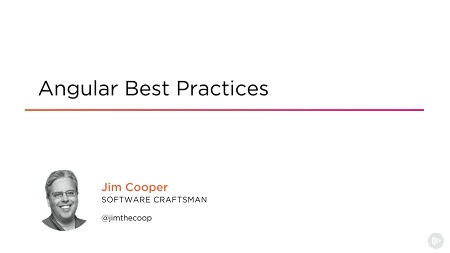English | MP4 | AVC 1280×720 | AAC 44KHz 2ch | 1h 37m | 357 MB
As you learn a new technology, it’s easy to miss or forget some of the best practices. This course will teach you some of those best practices within Angular.
It’s easy to create simple applications in Angular, but once you start building larger, more complex applications, you can quickly run into legibility, scalability, and performance issues if you’re not careful. In this course, Angular Best Practices, you’ll learn best practices in Angular. First, you’ll discover the Angular project and folder organization. Next, you’ll explore Angular module organization and how to use Core, shared, and feature modules. Then, you’ll learn about Angular component, service best practices, and some really important performance best practices to ensure you’re building fast and scalable Angular applications. Finally, you’ll cover a few basic coding best practices while you’re at it. By the end of this course, you’ll know all the key best practices to help you build respectable, high quality, and scalable Angular applications.
Table of Contents
01 – Course Overview
02 – Introduction
03 – Setting up Our Environment
04 – Getting Started with the CLI
05 – File Naming
06 – Folder Structure
07 – One Item per File
08 – Summary
09 – Introduction
10 – The Single Responsibility Principle
11 – Symbol Naming Best Practices
12 – Using Immutability
13 – Small Functions
14 – Summary
15 – Introduction to Angular Module Organization
16 – Creating a Core Module
17 – Creating Shared Modules
18 – Creating Feature Modules
19 – Summary
20 – Introduction
21 – Prefixing Component Selectors
22 – Separating Component, CSS, and Template Files
23 – Decorating Input and Output Properties
24 – Delegating Complex Logic to Services
25 – Component Member Sequence
26 – Implementing Life Cycle Hook Interfaces
27 – When to (and Not to) Create Components
28 – Summary
29 – Introduction
30 – Marking Services as Injectable
31 – Using Services for Data Retrieval
32 – Service Injector Best Practices
33 – Summary
34 – Introduction
35 – Ahead-of-time Compilation and the CLI
36 – Lazy Loading Feature Modules
37 – Monitoring Bundle Sizes
38 – Pure and Impure Pipe Performance
39 – Summary
Resolve the captcha to access the links!
